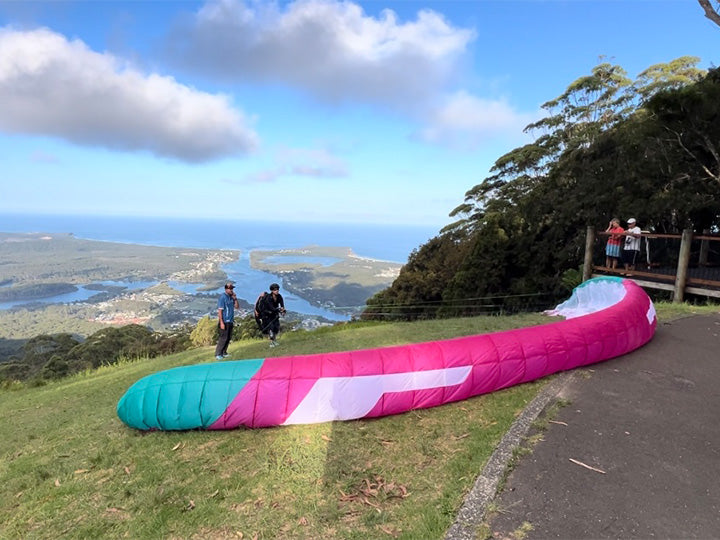Paramotoring Safety Tips: Stay Safe and Have Fun in the Air

Paramotoring, also known as powered paragliding, is an exhilarating sport that combines the freedom of paragliding with the power of a motorized engine. It allows enthusiasts to soar through the skies, experience breathtaking views, and fulfil their dreams of flying. While paramotoring can be an incredibly rewarding hobby, it's crucial to prioritize safety and adhere to paramotor regulations. In this comprehensive guide, we will delve deep into paramotor safety, regulations, and equipment to ensure that your airborne adventures are thrilling and safe.
Understanding Paramotoring
Paramotoring involves flying with a lightweight motorised backpack called a paramotor, which provides thrust to a paramotor wing. This setup allows pilots to take off from flat ground and maintain controlled flight, making it accessible to many enthusiasts.
Paramotor Safety
Paramotoring is inherently risky. However, with proper precautions and adherence to safety guidelines, you can minimise the risks significantly.
Training
The foundation of paramotor safety is comprehensive training. Seek out a certified paramotor instructor and invest time in learning the basics of flying, meteorology and safety protocols. A reputable instructor will guide you through the following:
- Ground handling techniques.
- Pre-flight and post-flight checklists.
- Launching and landings.
- Emergency procedures.
- Weather analysis and awareness.
Equipment Inspection
Before every flight, perform a thorough inspection of your paramotor and wing. Check for any signs of wear, loose parts, or damaged lines. Ensure that your reserve parachute is properly packed and up to date.
Weather Awareness
Paramotor flights are heavily dependent on weather conditions. Always check the weather forecast before flying, and avoid flying in adverse conditions such as strong winds, thunderstorms, or low visibility. Understanding local weather patterns is crucial.
Pre-Flight Checklist
Follow a pre-flight checklist meticulously, which should include:
- Checking fuel levels.
- Verifying the engine's functionality.
- Inspecting the wing and lines.
- Ensuring you have all necessary safety gear, including a helmet and communication equipment.
Reserve Parachute
A reserve parachute can be a lifesaver in emergencies. Ensure it is in proper working condition and you know how to deploy it.
Weight Limits
Always adhere to weight limits specified by the paramotor manufacturer. Overloading can lead to loss of control and accidents.
Mental and Physical Fitness
Paramotoring requires concentration and physical fitness. Avoid flying when fatigued, impaired by substances, or mentally distracted.
Paramotor Regulations
To ensure the safety of paramotor pilots and those on the ground, there are regulations in place in many countries. Familiarising yourself with these regulations is essential to avoid legal issues and promote responsible flying.
Licensing and Certification
In many countries, you need a paramotor pilot's license to operate a paramotor legally. Seek guidance from your local aviation authority to understand the specific requirements in your area. In Australia, the Sports Aviation Federation of Australia (SAFA) is the sporting body that administrates Hang Gliding, Paragliding, Paramotoring and Weight Shift Microlights under regulations laid down by Civil Aviation Safety Authority (CASA).
Airspace Rules
Paramotoring is subject to airspace regulations, just like any other aircraft. Always be aware of restricted areas, controlled airspace, and no-fly zones.
Noise Regulations
Paramotors can generate noise, which may be subject to local noise ordinances. Be mindful of noise restrictions and respect the peace and privacy of others.
Flight Restrictions
Respect any flight restrictions that may be in place, such as altitude limitations and proximity to airports.
Insurance
Consider obtaining liability insurance to protect yourself in case of accidents or property damage during your flights.
Paramotor Equipment
Choosing the right equipment is crucial for both safety and enjoyment in paramotoring.
Paramotor
Select a paramotor that suits your skill level, body weight, and intended use. Consult with experienced pilots and consider thrust, weight, and portability factors.
Paramotor Wing
Choose a paramotor wing that is compatible with your paramotor. The wing's size and design should match your weight and skill level.
Safety Gear
Invest in quality safety gear, including a certified helmet, reserve parachute, and a flight suit. These items can make a significant difference in case of an emergency.
Communication Equipment
Carry a two-way radio or a GPS tracker to stay in touch with fellow pilots and ensure you can call for help.
Maintenance
Regularly maintain and service your paramotor and wing to keep them in optimal condition. This includes engine maintenance, wing inspections, and line checks.
Conclusion
Paramotoring offers a unique opportunity to experience the joy of flight, but it should always be approached with safety as the top priority. By prioritising training, adhering to paramotor regulations, and maintaining your equipment, you can ensure that your paramotoring adventures are both exhilarating and safe. Remember, the skies are vast and beautiful, and with the right precautions, you can soar through them safely and responsibly.
Ready to take flight? Join us at High Adventure for the ultimate paramotoring experience today!











